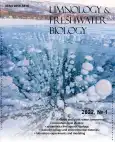Diatoms: life in glass houses
- 作者: Pickett-Heaps J.D., Pickett-Heaps J.
- 期: 编号 1 (2022)
- 页面: 1209-1209
- 栏目: Articles
- URL: https://journal-vniispk.ru/2658-3518/article/view/284549
- DOI: https://doi.org/10.31951/2658-3518-2022-A-1-1209
- ID: 284549
如何引用文章
全文:
详细
Diatoms are an extraordinarily successful group of organisms and their many thousands of species have diversified and specialized so as to occupy every environmental niche. Part of their success derives from their unique protective cell walls, beautifully elaborate structures made of pure silica. However, living inside walls made of this rigid, refractory material creates many problems. Just how diatoms circumvent these problems provides the major theme in this spectacular exploration of the biology of living cells. “Diatoms: Life in Glass Houses” is a 60 minute video covering all aspects of living diatoms, with emphasis on how they get around problems of living within cell walls made of pure silica.
全文:
“Diatoms: Life in Glass Houses” is a 60-minute video describing various aspects of the structure and life of diatoms, including:
- Fossil diatoms, the siliceous frustules of which form diatomite deposits.
- Advantages and problems of a cell living inside silicon glass walls.
- Morphology and symmetry of the diatom frustules.
- Structure and movement of the chloroplasts.
- Description of cytoplasmic vacuoles and their movement.
- Microtubule cytoskeleton and the Microtubule Center.
- Motility of centric and pennate diatoms.
- Phototaxis (the ability to respond to light).
- Secretion of holdfasts and adhesives.
- Labiate processes (“Rimoportulae”).
- Colony formation.
- Planktonic diatoms: effects of size, shape and colony formation.
- Chitin secretion; strutted processes (“fultoportulae”).
- Mitosis and cleavage.
- Species specific valve morphogenesis.
- Morphogenesis of spines. Turgor pressure.
- Sexual reproduction in centric diatoms.
- Sexual reproduction in pennate diatoms.
- Resting spores.
This film was created in 2003 but the main ideas and questions are still relevant today, and the film is very useful for beginning biologists who want to learn about these wonderful organisms. More information about this video is available in (Pickett-Heaps, 2003). The film in DVD and avi formats is available at:
- http://limnolfwbiol.com/files/share/Pickett-Heaps&Pickett-Heaps2003.zip (film in DVD)
- http://limnolfwbiol.com/files/share/Pickett-Heaps_Glass_House.avi (avi format)
under Creative Commons Attribution 4.0 International Public License.
Conflict of interests
The authors declare that they have no competing interests.
作者简介
J. Pickett-Heaps
Email: jph@cytographics.com
J. Pickett-Heaps
编辑信件的主要联系方式.
Email: jph@cytographics.com
参考
- Pickett-Heaps J. 2003. Teacher’s guide. Diatoms: life in glass houses. Melb. Cytographics. URL: www.cytographics.com/resource/catalog/tapes/in-dia.pdf
补充文件









